Affiliate links on Android Authority may earn us a commission. Learn more.
How to use AirDrop to transfer files on iOS and macOS
It’s very common these days for us to have multiple devices on the same operating system, whether that is a laptop, desktop, smartphone, or tablet. We also tend to share and move files between those devices, whether it’s our gadgets or someone else’s. Android users have Nearby Share, but Apple users have the arguably better AirDrop. Here’s everything you need to know on how to use AirDrop, as well as some troubleshooting tips if AirDrop is not working.
Read more: How to turn on Airdrop on a Mac
QUICK ANSWER
To use AirDrop, enable the feature on the sending and receiving devices, make sure they are on wi-fi, and then share the file via the Share menu and choose AirDrop. If the recipient has enabled receiving files from other people, they will get a notification on their phone that you want to share a file with them. They can either accept or decline the request.
JUMP TO KEY SECTIONS
How do I enable AirDrop on iOS and Mac devices?
Even though it’s the same platform on both iOS and macOS, there are some differences in the initial setup and usage.
iOS
To enable the feature on iOS, swipe down on the battery icon at the top-right to open Control Center. Hold your finger down on the wi-fi button.
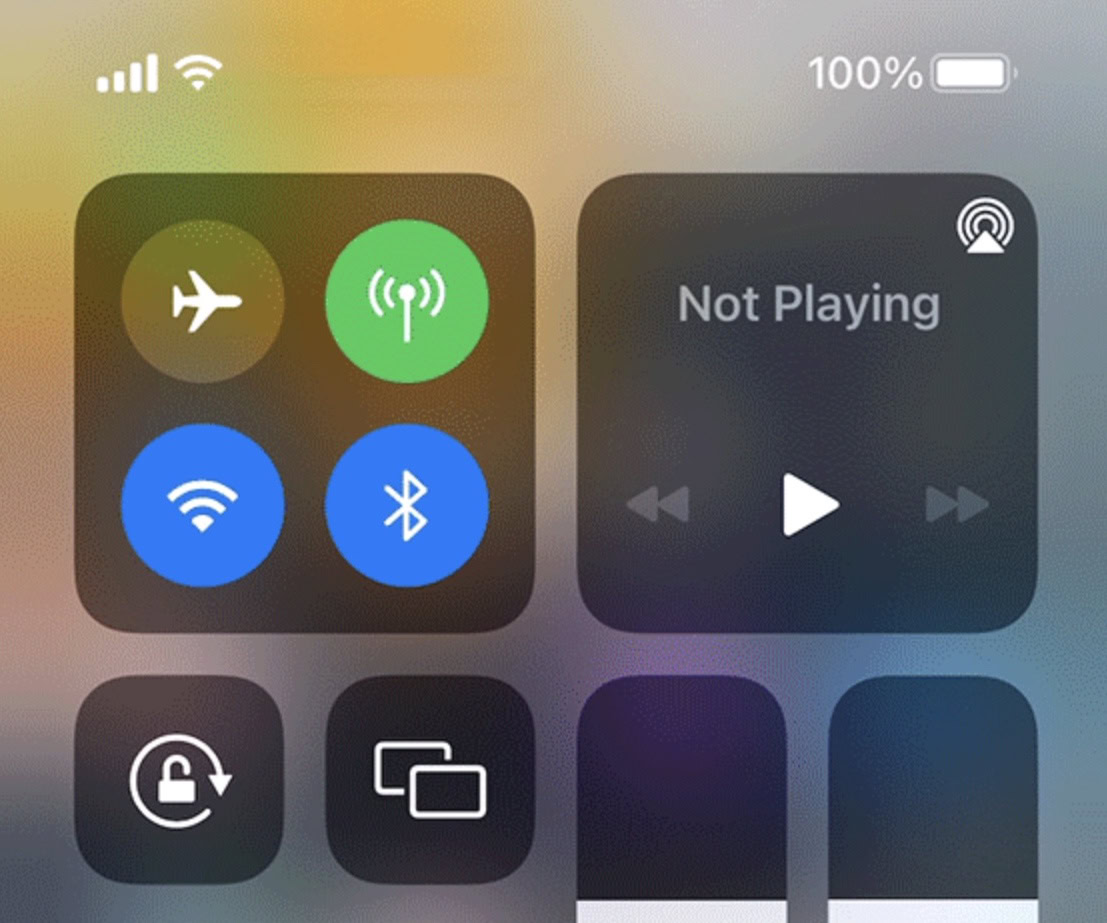
On the menu that pops up, tap the AirDrop icon until it turns blue. It will say Contacts Only (which is the safest option). If you want to be able to receive files from anyone, hold down your finger on the AirDrop icon.
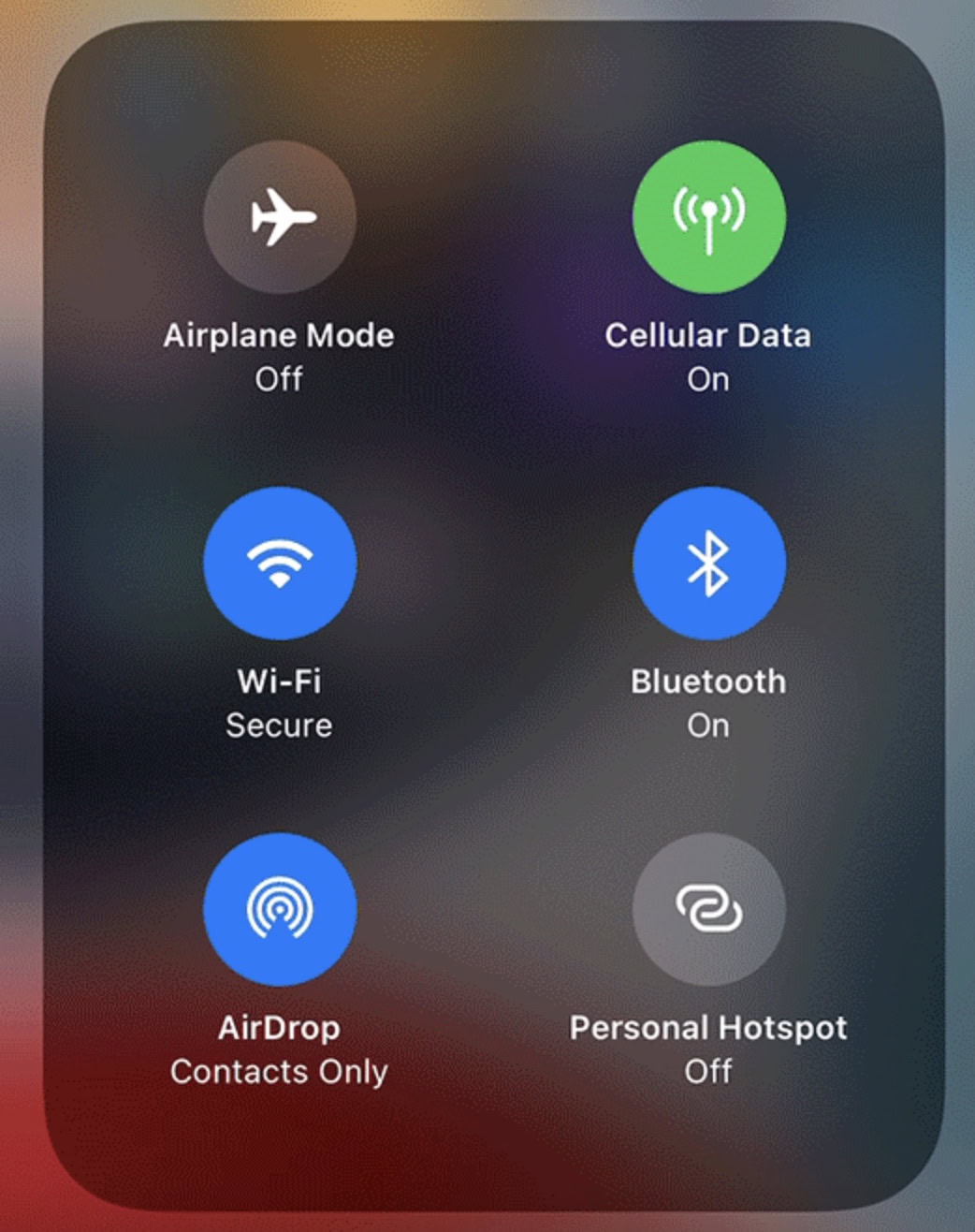
This brings up another menu where you can choose your access permissions, as well as switch the feature off later.
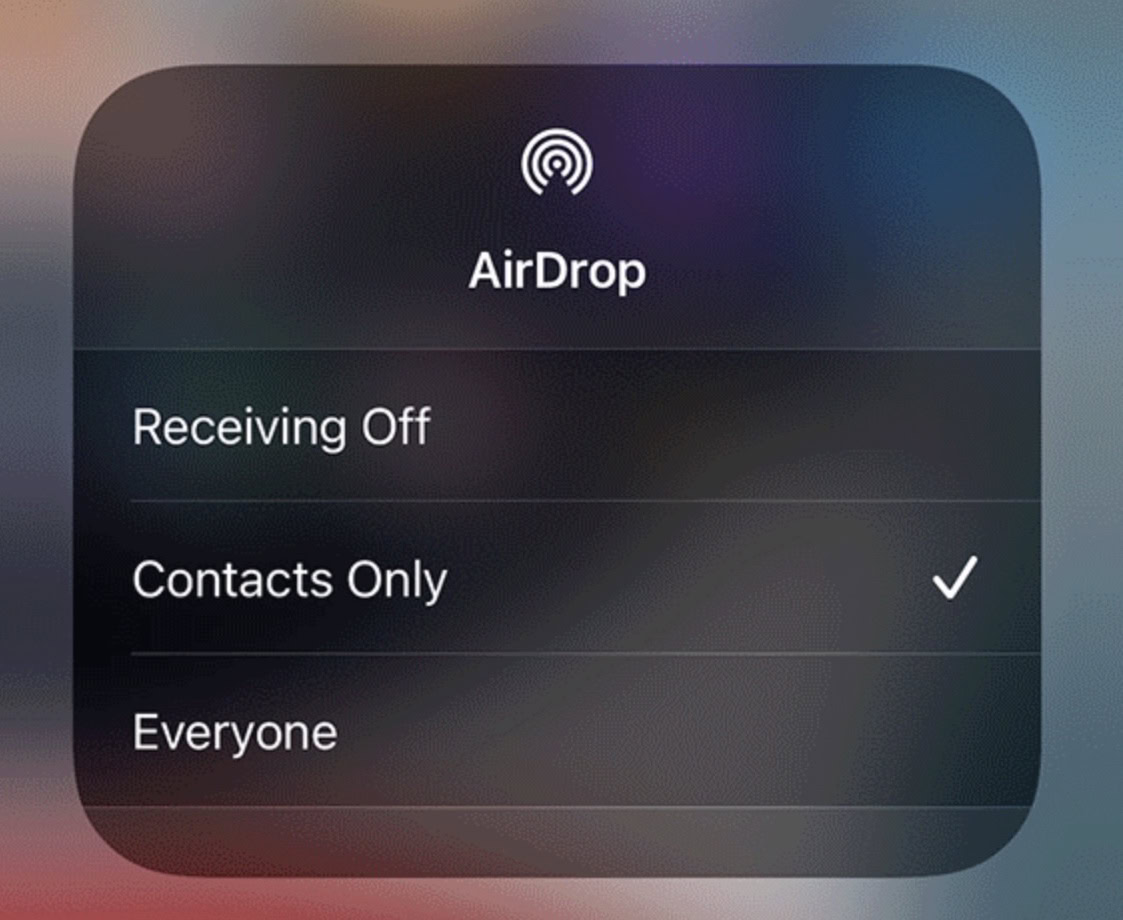
macOS
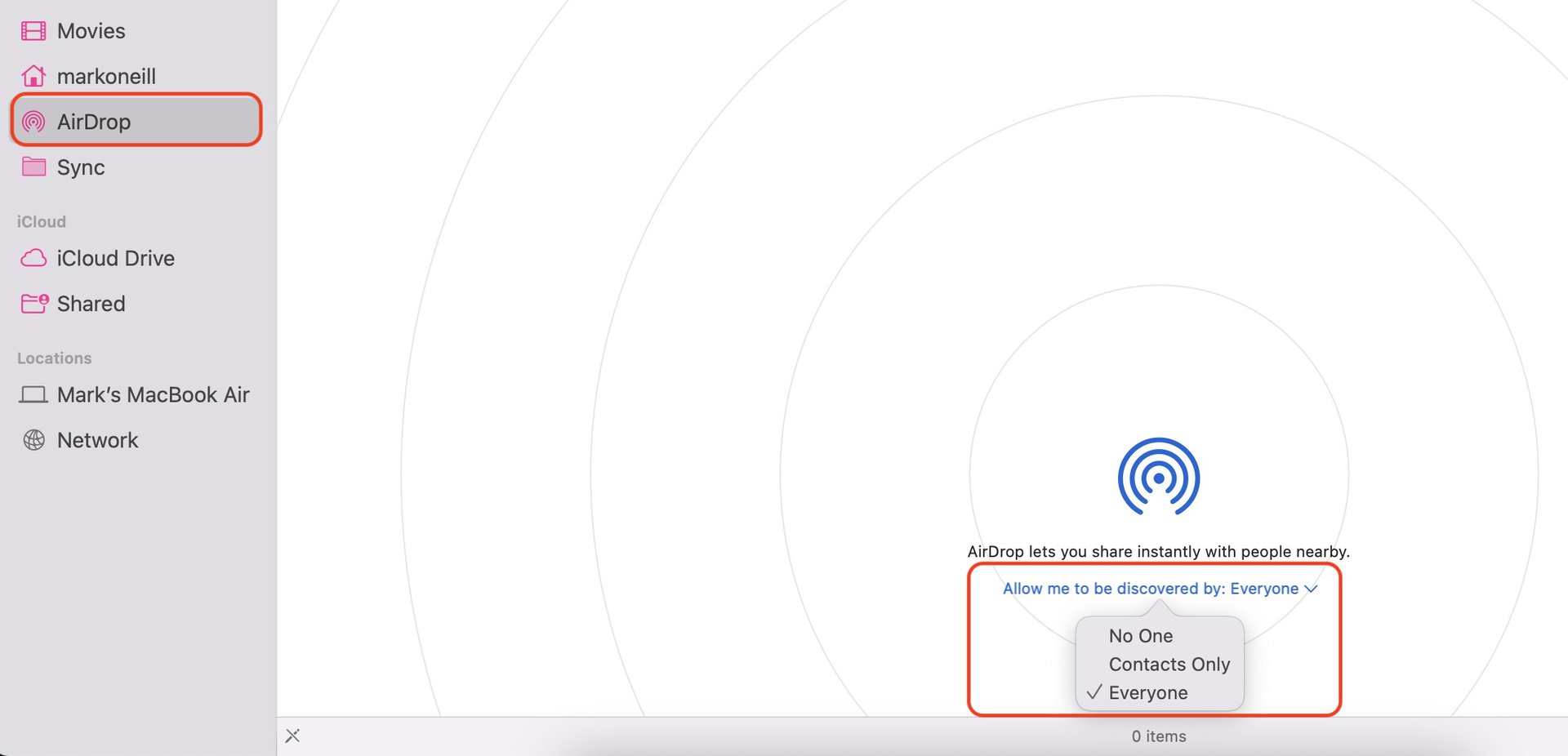
macOS, on the other hand, has a very easy way to enable the function. Just click AirDrop in the left Finder sidebar, then in the main part of the screen, click Allow me to be discovered by: No One switches it off again, while Contacts Only and Everyone will make you findable on other people’s AirDrop screens.
For the purposes of not being sent infected files though, it’s best to keep it on Contacts Only. That way, you know the person and can pretty much trust them.
How to use AirDrop on iOS and Mac devices
Once you have it switched on, here is how to use AirDrop on both iOS and macOS.
iOS
To share a file on AirDrop on iOS, select the file and tap the Share menu. Now tap Airdrop.
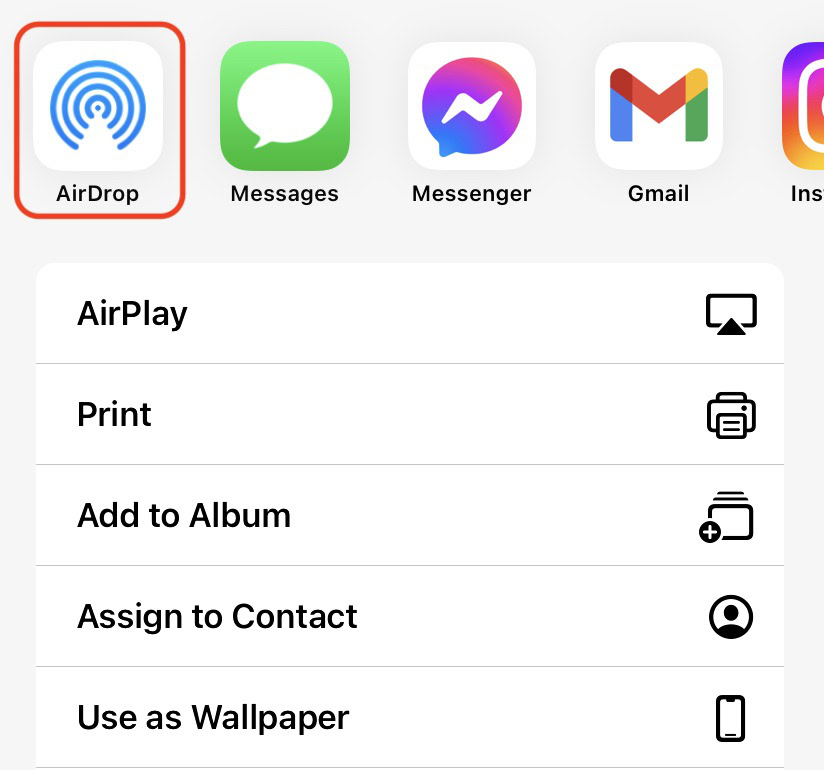
A list of all available devices nearby will appear on the screen. They are separated into People, Devices, and Other People.
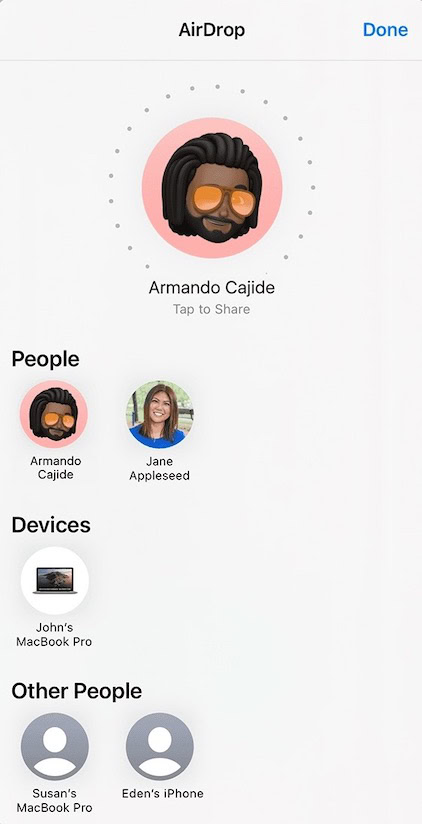
Once you tap on the recipient, they will get a notification on their phone. Some file types, such as images, will show a preview, while other file types, such as PDF, will only show the file format logo.
The recipient then needs to either tap Accept or Decline. If they accept, the file will appear on their device and you will get a triple-beep success sound.

macOS
With macOS, it is slightly easier. Drag your file from the Finder folder it’s located in, and drag it into the AirDrop window. Then drop it onto the avatar of the person you want to send it to.
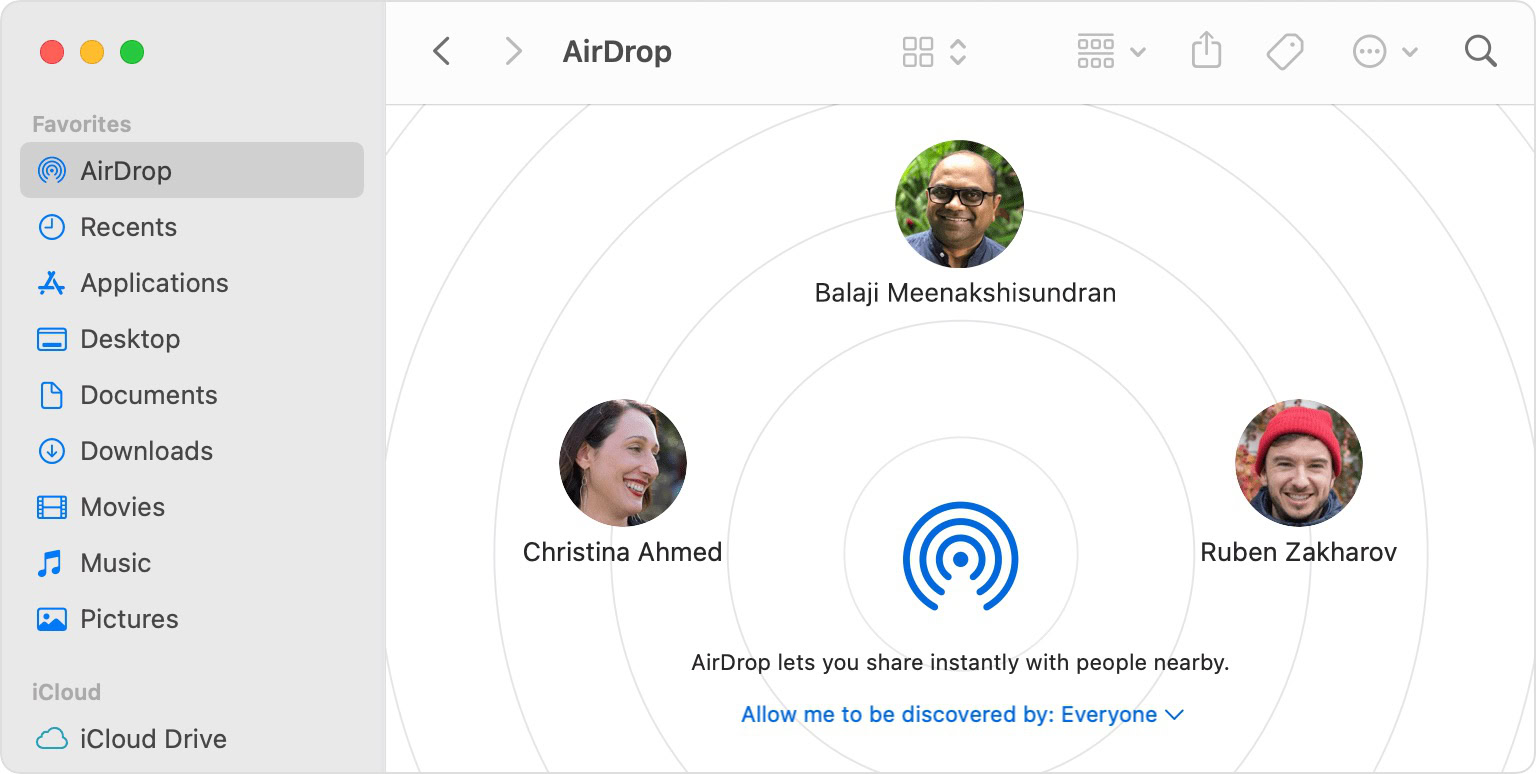
The recipient then gets a notification on their device. This is the notification that would appear on a Mac. As with iOS, it’s a simple case of clicking Accept or Decline.

Why is AirDrop not working? Some troubleshooting tips
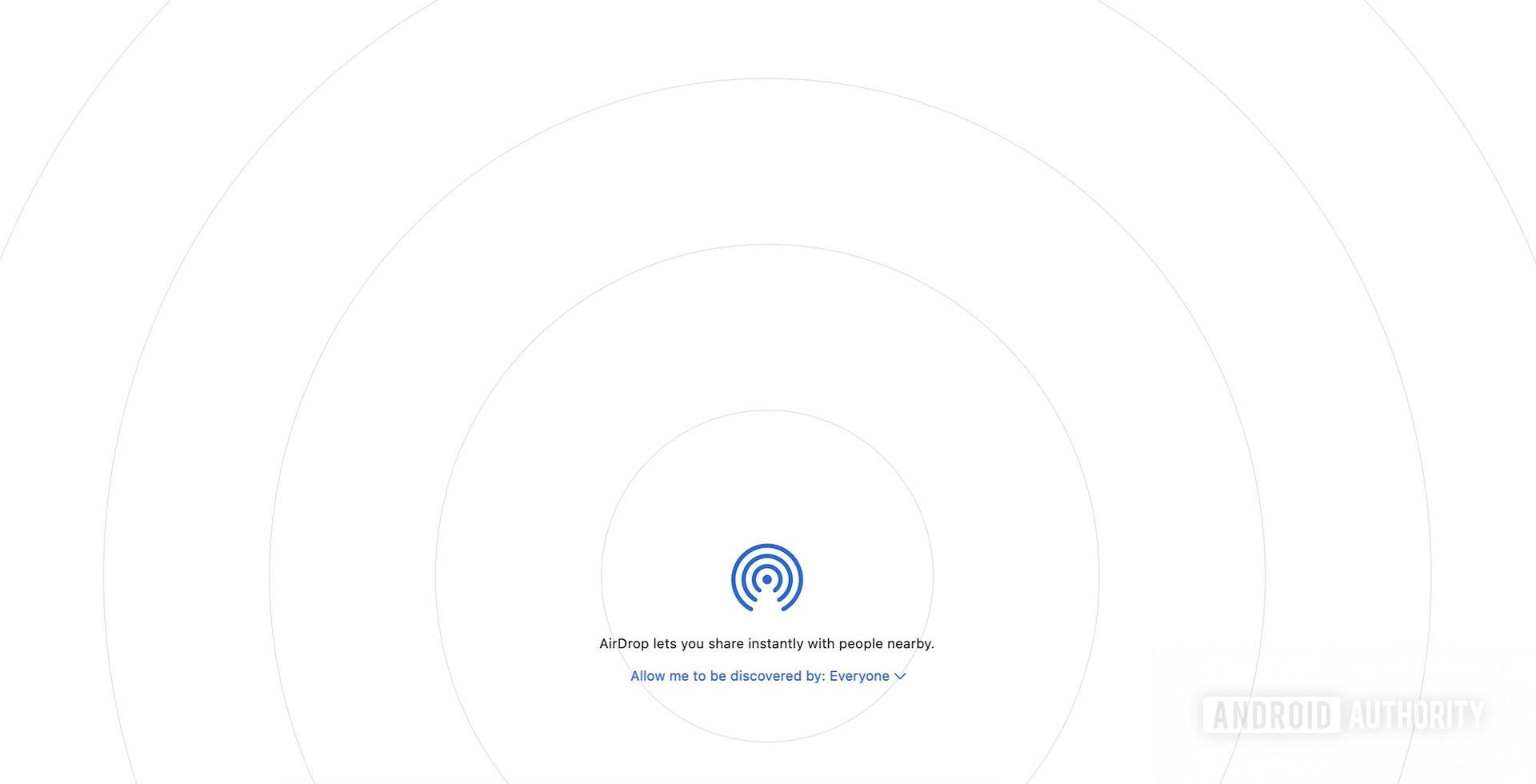
If you find that AirDrop is not working on one or all of your devices, then here are some quick easy things you can check.
- Are all of the devices on wi-fi? If any of them are using a VPN, a mobile company data plan, or a Personal Hotspot, then you need to switch all that off and get the devices onto wi-fi.
- Is the AirDrop feature enabled on the device? If not, use the tutorial above to switch it on.
- Is Bluetooth on? If not, turn it on.
- How far apart are the devices from one another? Apple says they cannot be further than 30 feet from each other. So if they are further away, move them closer.
- Is your macOS firewall blocking AirDrop? Check by going to System Preferences–>Security & Privacy–>Firewall, and look at your Firewall Options.
Read more: What we really want from an Android Airdrop alternative
FAQs
It likely hasn’t been enabled yet. Go to Finder Preferences and then the Sidebar tab. Tick the box for AirDrop.
The devices all need to be on wi-fi to find each other. Switch off any VPNs, mobile company data plans, and Personal Hotspots. Make sure AirDrop and Bluetooth are enabled on all devices, move the devices closer to one another, and ensure your macOS firewall is not blocking AirDrop. Finally, make sure you know the AirDrop name for each device – it might be that the device has a name you weren’t expecting
No, AirDrop is a closed Apple proprietary system, and is therefore incompatible with Android devices.
Yes, it works for all file types. However, the bigger the file, the longer it will take. Your wi-fi connection’s speed plays a large part in how long you have to wait. Compress the file as much as possible before beginning the transfer process.